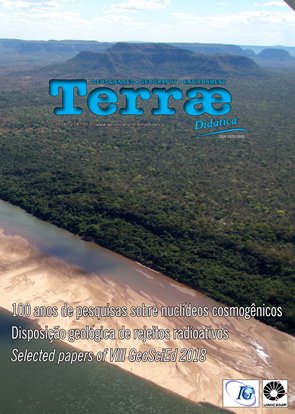Resumen
The Earthlearningidea website (www.earthlearningidea.com) launched in 2008 as part of the International Year of Planet Earth, publishes geoscience teaching ideas online as free-to-download pdfs. The website publishes a new idea every two weeks, so that more than 280 ideas have now appeared in English. Translators around the world kindly offered to translate the ideas into their own languages and more than 900 translations can now be accessed through the website. So far, nearly 3.5 million pdfs of the ideas have been downloaded across the world at a mean rate of more than 40,000 per month. The activi-ties have been used in teacher training in a number of countries, as recorded in the Earthlearningidea blog at http://earthlearningidea.blogspot.co.uk/. An analysis was published in 2016 of the different approaches used in the ideas pub-lished to that date. The analysis (n=250) showed that some ideas covered several of categories, and that overall coverage was: basic skills, 4%; observation, 16%; illustration 39%; investigation, 10%; diagrammatic models, 5%; physical models, 44%; thought experiments, 13% and unattributed, 12%. The thought experiments were deliberately focused on promoting deep un-derstanding through deep questioning in the lab and field. They include examples such as: ‘Earthquake through the window - what would you see, what would you feel?: asking pupils to picture for themselves what an earthquake through the window might look like’; ‘Sand on a sill: What will happen to a sand grain left on a window sill? – a rock cycle discussion’; ‘From clay balls to the structure of the Earth: a discussion of how physics can be used to probe Earth’s structure’; ‘Is there life in this soil sample? - questions to consolidate pupil understanding of soil-formation’; ‘The ‘What could hurt you here?’ ap-proach to field safety - teaching how to keep safe during fieldwork and other outdoor activities’; ‘What was it like to be there – in the rocky world? – bringing the formation of solid rock to life by imagining yourself there when it formed’; ‘Fieldwork: the ‘All powerful’ strategy – discussing geological histories in imaginative ways’ and ‘Fieldwork – interactive re-creation: ac-tivities using simple transportable apparatus to simulate features in the field’. Two of these Earthlearningidea activities are given in full, as examples of the Earthlearningidea approach in general, and the use of the ‘thought experiment’ ideas to gen-erate deep questioning and discussion in the lab and field, in particular.Citas
Earthlearningidea website: http://www.earthlearningidea.com
King C. 2017. Fostering deep understanding through the use of geoscience investigations, models and thought experiments. The Earth Science Education Unit and Earthlearningidea experiences. In: Vasconcelos C. ed. 2017. Geoscience education: indoor and outdoor. Switzerland: Springer. p. 3-23.
A Terrae Didatica utiliza a licença do Creative Commons (CC), preservando assim, a integridade dos artigos em ambiente de acesso aberto.
Descargas
Los datos de descargas todavía no están disponibles.

